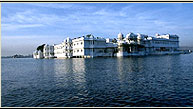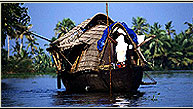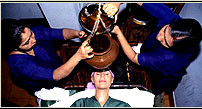-| Kapilvastu Piprahava | -
Location: Border of Nepal - Lat 27º 26'N, Long 87º 7'E

The ancient Kapilvastu Piprahava is located abut 110 kms. from Gorakhpur in
U.P. Railway station of Naugarh, on Gorakhpur Gonda-loop line, is the nearest
railway station. Kapilvastu was the ancient capital city of the Sakaya Clan,
one of the 16th Mahajanapadas or republics. It was in open environs of Kapilvastu,
that the holy soul of the Prince Siddharth (Later Gautam Buddha) spent his childhood.
The site is now represented by two closely situated mounds locally known as
Ganvarla and Piprahava – containing the ruins of the residential area and
the Maha-stupa respectively. A large number of Kushana sealings bearing the
name of Kapilvastu provided the clinching evidence to the identification. Piprahava
revealed the large stupa containing two different relics caskets through different
excavations. One of the caskets contains reference to the brothers, sisters
etc. of Buddha, thus further lending credence to the identification of the site
with Kapilvastu.
The mounds contain ruins of monasteries which are supposed to have been built
upon the palatial buildings of the earlier period have been found in Ganawaria
, i.e., the township of ancient Kapilvastu. The occupational deposit on the
mound, that signify the presence of the township of ancient Kapilvastu, have
been unearthed during excavations. These ample findings are datable from 600
BC to 300 AD. The excavation at Piprahava mound has led to the discovery of
the stupa believed to have been constructed soon after the death of Lord Buddha
in 5th century BC. It was, however, subsequently enlarged during the Mauryan
time and later four monasteries, a public hall and various other shrines were
added and which were successively enlarged and modified during the later period.
Among these, the eastern monastery was the most imposing structure elaborated
in the latest phase by a Kushan king. Therefore, this monastery was popularly
known as Deva Gupta Vihara.
A number of terracotta seals inscribed in Kushan characters, terracotta human
and animal figurine, punch marked silver coins, seals and pottery fragments
are among some finds recovered from the site that are worth mentioning.




